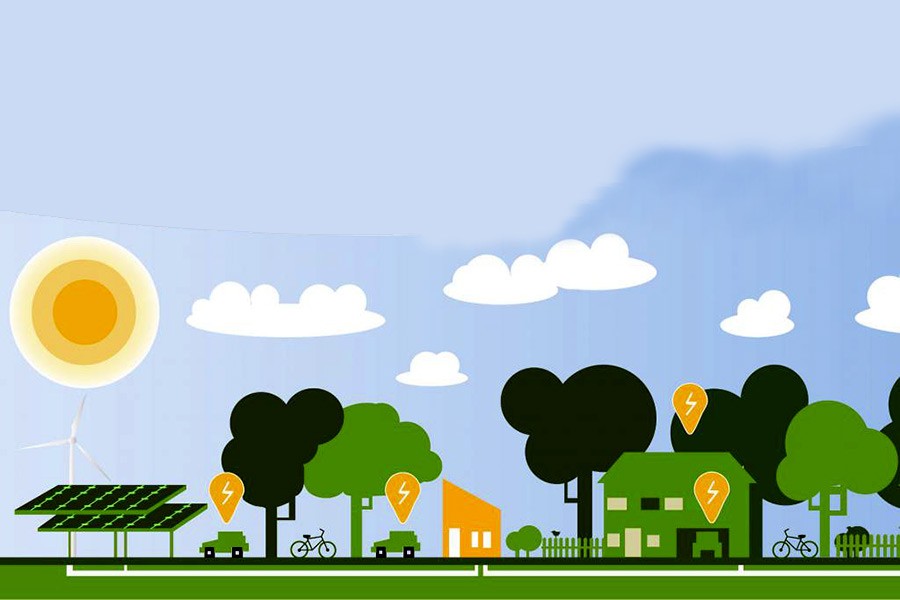Modern industrial economy started its journey with the burning of coal for powering machinery-and emitting carbon. With the invention of internal combustion engine, although our dependence on coal lowered, we added new source of carbon emission, from combustion of liquid fuel in engine cylinders. With the invention of light bulb at the dawn of the 20th century, carbon emission simply accelerated as we started burning coal, liquid fuel and natural gas to produce electricity to power growing number of electrical devices. Basically, carbon emission became the underlying success measure of industrial economy. As a result, carbon emission consistently grew since the inception of industrial revolution in 1750, reaching its peak in 2014. There used to be strong correlation between economic growth and carbon emission. But fortunately, decoupling carbon emission and economic growth has begun. It's encouraging to note that IEA (International Energy Agency) found that CO2 emissions remained flat for the third straight year even as global economy kept growing.
It has been reported that researchers measured 32.1 metric gigatons of CO2 emissions in 2016, the same as in the previous two years, despite the fact that the global economy grew 3.1 per cent annually during that period. According to Scientific America, credit goes to natural gas, renewable energy and efficiency gains. As it has been stated by IEA, market forces, technology cost reduction, concerns about climate change and air pollution have been the main forces behind a recent decoupling of emissions and economic growth. There is no denying that the pause in emissions growth is not enough to put the world on a path to keep global temperatures from rising above 2°C. But the most important finding is that technology progression can reach a situation to decouple emission from growth in global scale. Although regulation deserves credit, the force of technology in driving growth through reduced emission appears to be the most powerful underlying force to reach a desired pathway-consistent decline of carbon emission with increasing economic growth.
The growth of renewable energy, particularly wind power, has been a very encouraging development. Continued progression of technology is about to reach a situation when the energy produced directly from sunlight and wind without having any emission would be the cheapest source of energy to power the modern civilisation. Upon meeting more than 40 per cent energy demand of Denmark with 5GWs installed capacity of wind mills, Danish Energy Minister Lars Chr. Lilleholt stated, "the arguments over renewables, once driven entirely by environmental considerations, are now very much based on the economics."
The growth of electrical vehicles technology is another area of our hope of reducing dependence on carbon-based economy. Despite the hiccough created by likely Cobalt shortage in making enough batteries to power global fleet of electric vehicles, the overall momentum is very much on the track to having all electric vehicles by 2040, or even early. Research is progressing to find alternative means of producing high-density energy battery requiring far less cobalt or other rare materials.
The progress in these two major fronts, like power generation from renewable sources and electric vehicles for having a cheaper option than burning liquid fuel, natural gas or coal, has started the erosion of carbon economy. Although we are about to be at the cusp of this eroding trend, the underlying technology potential indicates that the rate of erosion will simply accelerate in the coming years.
In some of the developing countries, rapid economic growth in recent past has fueled the consumption of coal, natural gas and liquid fuel. Such growth has created the temptation of expanding the infrastructure to support carbon economy. For example, some of these countries like Bangladesh are even planning to build nationwide oil transmission network, and setting up mega refineries to meet the growing need of liquid fuel over next 40 to 50 years. Instead of extrapolating past data related to the consumption of liquid fuel and preparing for infrastructure to support estimated future demand, these countries should take into consideration of opportunities created by technology to phase out consumption of carbon emitting fuels. Instead of investing in oil or coal infrastructure, these countries should rather focus on creating infrastructure for charging electric vehicles and adopting wind as well as other renewable energy options to open the opportunity of not only enjoying clean energy, but also, most importantly, to attain energy self sufficiency. Basically, all the countries having possession of long coastlines are on the path of having the opportunity to meet the whole energy demand from wind power.
Instead of allocating resources for expanding the carbon economy whether in the form of installing oil pipeline, or constructing mega facility for oil refining, or establishing ports for coal landing, or setting up many more refueling stations to meet demand for energy, it's time to replace them with clean, sustainable alternatives. Failing to do so will bring about significant sufferings originating from multiple dimensions stating from poor economic competitiveness, sick health condition to increasing reliance on foreign sources for dirty energy. It's time to monitor and predict the discontinuity created by technology and to assess the implication for taking rational decisions in making smarter investments.
M Rokonuzzaman, Ph.D is academic, researcher and activist on technology, innovation and policy.


